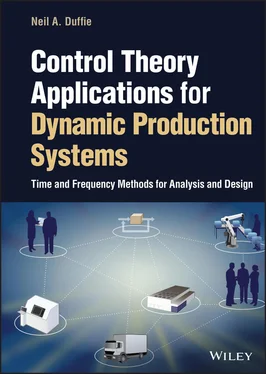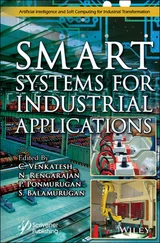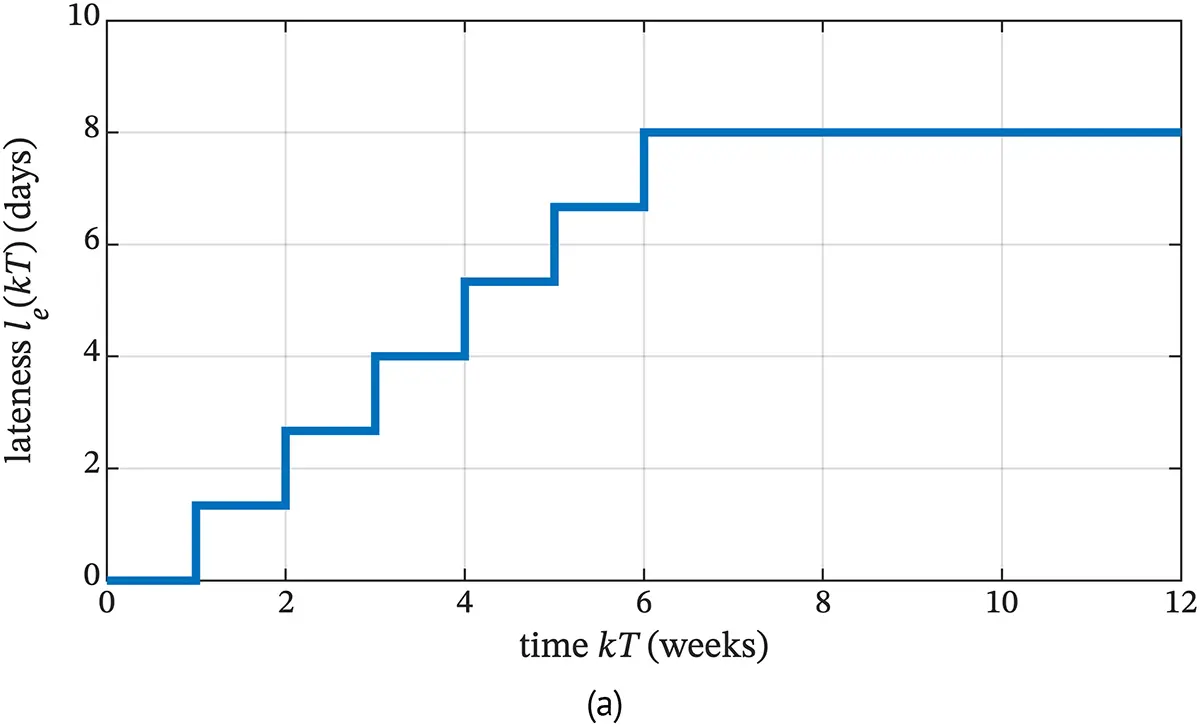

Figure 2.9 Response of change in planned lead time to lateness in order completion.
Example 2.6 Exponential Filter for Number of Production Workers to Assign to a Product
The exponential filter shown in shown in Figure 2.10 is used in a component of a production system to make periodic decisions regarding the workforce that should be assigned to a product when there are fluctuations in demand for the product. The exponential filter has a weighting parameter 0 < α ≤ 1 that determines how significantly the amplitudes of higher-frequency fluctuations in number of workers are reduced with respect to the amplitudes of fluctuations in demand. This reduction is important because making rapid, larger amplitude changes in the number of workers is likely to be costly and logistically difficult.

Figure 2.10 Exponential filter for smoothing demand to determine the number of production workers to assign to a product.
The discrete-time equation for the filter is

where nw ( kT ) is the number of workers, ri ( kT ) orders/day is the demand, Kw workers/(orders/day) is the fraction of a worker’s day required for an order, and T days is the period between calculations of the number of workers to assign to the product.
For weighting parameter α = 0.1, Kw = 1/8 workers/(orders/day), and T = 10 days the response of number of workers is shown in Figure 2.11b for the fluctuation in demand shown in Figure 2.11a. The response was calculated recursively using the above difference equation in a manner similar to that shown in Program 2.2. The relatively small value of α results in significant smoothing of the number of workers with respect to the fluctuations in demand.
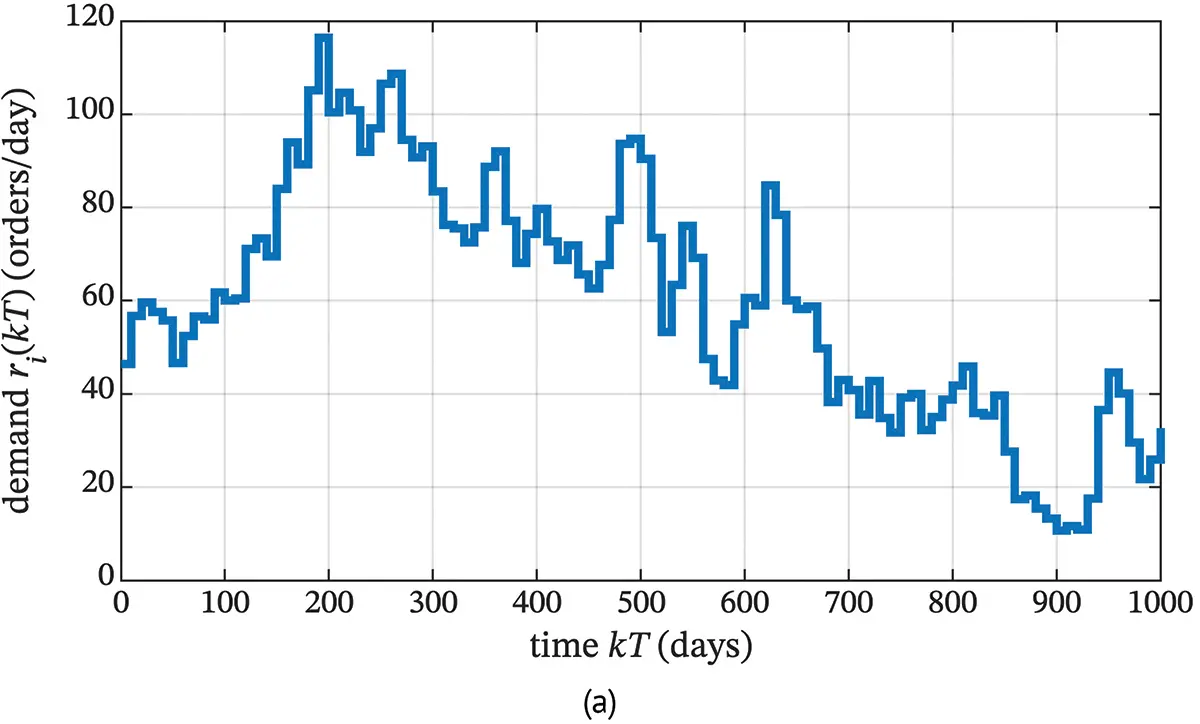
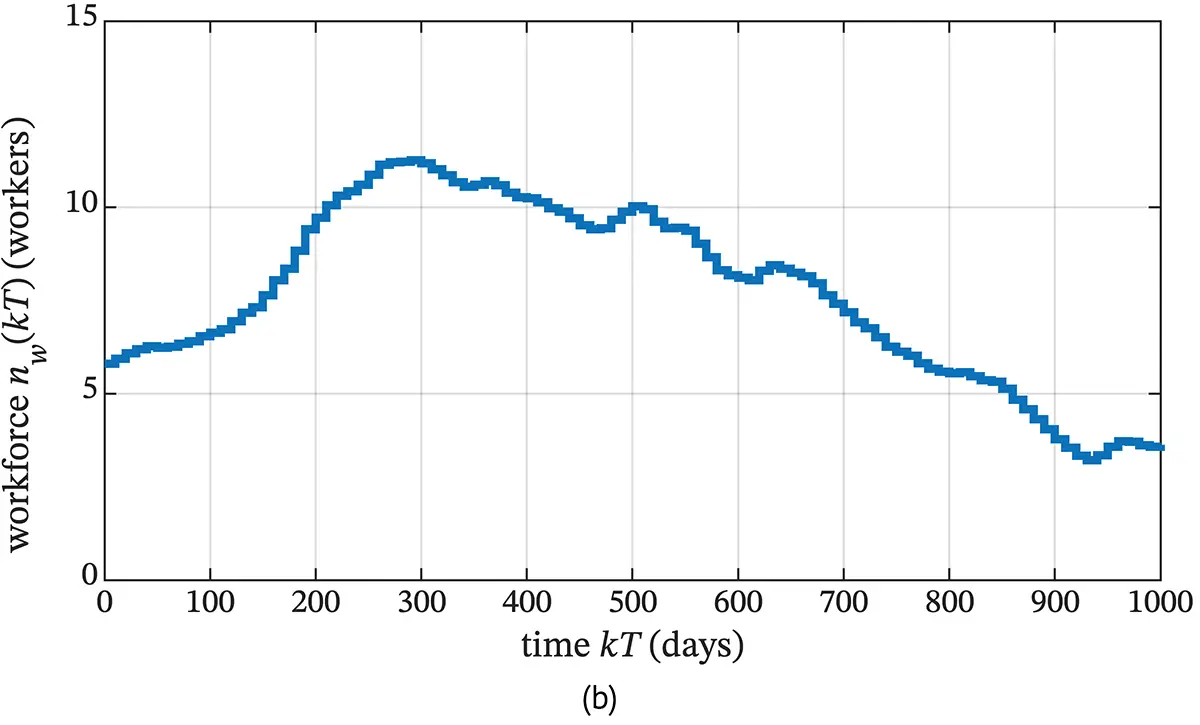
Figure 2.11 Response of desired workforce to fluctuations in demand.
Delays are common in production systems and sources of delay include data gathering and communication, decision-making and implementation, setup times, processing times, and buffers. For example, decisions may not be made until sometime after relevant information is obtained, and, for logistical reasons, implementation of decisions may not be immediate. Disturbances may not have immediate effects, and these effects may not be detected until they have propagated through a production system. Delays often are detrimental and limit achievable performance; therefore, it is important to include delays in models when they are significant.
Example 2.7 Continuous-Time Model of Delay in a Production System
In the example illustrated in Figure 2.12, Company A obtains unfinished orders from a supplier, distant Company B, and then performs the work required to finish them. Both companies are assumed to process orders at the same rate as they are received. Unfinished orders are shipped from Company B to Company A, and the time between an order leaving Company B and arriving at Company A is a constant D days. Companies A and B have lead times LA and LB days, respectively, which is the time between when the company receives an order and when the company has completed processing the order; lead times are assumed to be constant and can be modeled as delays.

Figure 2.12 Lead time and transportation delays in a two-company production system.
If the order input rate to Company B is demand ri ( t ) orders/day and the order input rate to Company A is rA ( t ) orders/day, the order output rates from Companies B and A, rB ( t ) and ro ( t ), respectively, are


Shipping is described by

Combining the delays, the relationship between demand and the completed order output rate of Company A is

Example 2.8 Discrete-Time Model of Assignment of Production Workers with Delay
The rate of orders input to a production system often fluctuates and it is necessary to adjust production capacity to follow this order input rate. The use of a discrete-time exponential filter in decision-making to smooth fluctuations was described in Example 2.6 and as shown in Figure 2.13, an exponential filter is used in a similar manner in this example to determine the portion of the production capacity to be provided by permanent workers; this portion cannot be adjusted quickly and should not be adjusted at high frequencies. The remaining portion is provided by cross-trained workers; this portion can be adjusted immediately.

Figure 2.13 Adjustment of permanent and cross-trained worker capacity in a production system to match fluctuating order input rate.
Order input rate ri ( kT ) orders/day is measured regularly with a period of T days, weekly for example, and the portion of production capacity provided by permanent workers rp ( kT ) orders/day is adjusted; however, because of logistical issues in hiring and training, there is a delay of dT days in implementing permanent worker adjustment decisions where d is a positive integer. The exponential filter is used to focus adjustments in permanent worker capacity on relatively low frequencies:

where 0 < α ≤ 1. A relatively high value of weighting parameter α results models relatively rapid adjustment of permanent worker capacity, whereas a relatively low value of weighting parameter α models significant smoothing and relatively slow adjustment of permanent worker capacity.
Читать дальше
